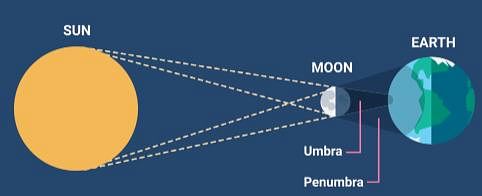Class 5 Exam > Class 5 Tests > Science Olympiad for Class 5 > Olympiad Test: Earth And Universe - 1 - Class 5 MCQ
Olympiad Test: Earth And Universe - 1 - Class 5 MCQ
Test Description
10 Questions MCQ Test Science Olympiad for Class 5 - Olympiad Test: Earth And Universe - 1
Olympiad Test: Earth And Universe - 1 for Class 5 2024 is part of Science Olympiad for Class 5 preparation. The Olympiad Test: Earth And Universe - 1 questions and answers have been
prepared according to the Class 5 exam syllabus.The Olympiad Test: Earth And Universe - 1 MCQs are made for Class 5 2024 Exam. Find important
definitions, questions, notes, meanings, examples, exercises, MCQs and online tests for Olympiad Test: Earth And Universe - 1 below.
Solutions of Olympiad Test: Earth And Universe - 1 questions in English are available as part of our Science Olympiad for Class 5 for Class 5 & Olympiad Test: Earth And Universe - 1 solutions in
Hindi for Science Olympiad for Class 5 course. Download more important topics, notes, lectures and mock
test series for Class 5 Exam by signing up for free. Attempt Olympiad Test: Earth And Universe - 1 | 10 questions in 20 minutes | Mock test for Class 5 preparation | Free important questions MCQ to study Science Olympiad for Class 5 for Class 5 Exam | Download free PDF with solutions
Olympiad Test: Earth And Universe - 1 - Question 1
There are eight planets in our universe. Say O, P, Q, R, S, T, U, and V. We can call it planet ‘S’. Among all, this is called the red planet because its soil and rocks are red in colours. This planet resembles Earth the most. Scientists believe that it is the only planet, besides Earth, where life may exist.
‘S’ in the above paragraph is _____________.
‘S’ in the above paragraph is _____________.
Detailed Solution for Olympiad Test: Earth And Universe - 1 - Question 1
Detailed Solution for Olympiad Test: Earth And Universe - 1 - Question 2
| 1 Crore+ students have signed up on EduRev. Have you? Download the App |
Detailed Solution for Olympiad Test: Earth And Universe - 1 - Question 3
Detailed Solution for Olympiad Test: Earth And Universe - 1 - Question 4
Olympiad Test: Earth And Universe - 1 - Question 5
Which eclipse do you experience if you are standing in the Moon’s umbra?
Detailed Solution for Olympiad Test: Earth And Universe - 1 - Question 5
Olympiad Test: Earth And Universe - 1 - Question 6
It takes about _______________days for the Moon to complete its cycle of phases.
Detailed Solution for Olympiad Test: Earth And Universe - 1 - Question 6
Olympiad Test: Earth And Universe - 1 - Question 7
It takes about ___________ days for the Moon to revolve around the Earth.
Detailed Solution for Olympiad Test: Earth And Universe - 1 - Question 7
Olympiad Test: Earth And Universe - 1 - Question 8
Which is a group of constellation through which the Sun appears to move?
Detailed Solution for Olympiad Test: Earth And Universe - 1 - Question 8
Detailed Solution for Olympiad Test: Earth And Universe - 1 - Question 9
Olympiad Test: Earth And Universe - 1 - Question 10
Which of these planets has the highest gravitational pull?
Detailed Solution for Olympiad Test: Earth And Universe - 1 - Question 10
|
36 videos|57 docs|47 tests
|
Information about Olympiad Test: Earth And Universe - 1 Page
In this test you can find the Exam questions for Olympiad Test: Earth And Universe - 1 solved & explained in the simplest way possible.
Besides giving Questions and answers for Olympiad Test: Earth And Universe - 1, EduRev gives you an ample number of Online tests for practice
|
36 videos|57 docs|47 tests
|
Download as PDF


















